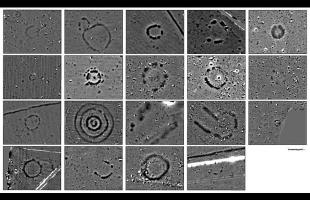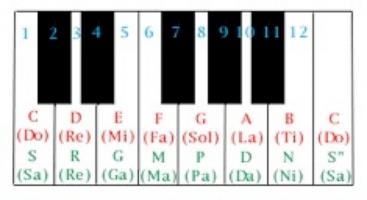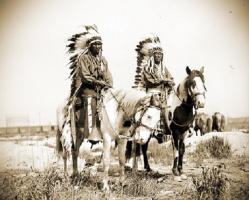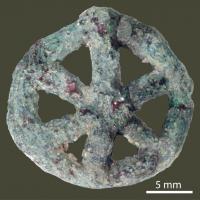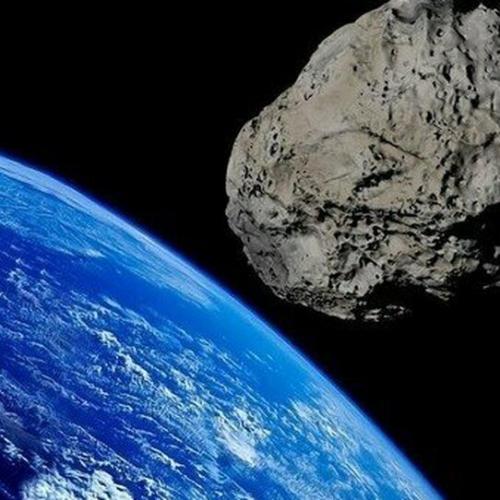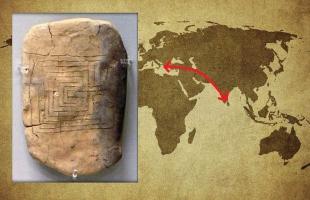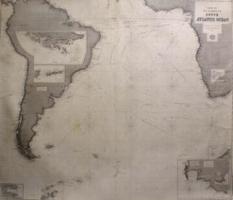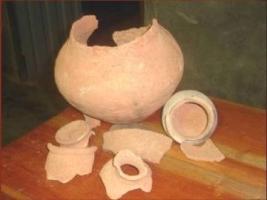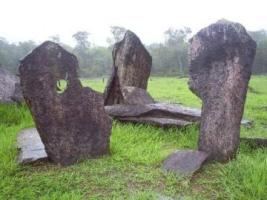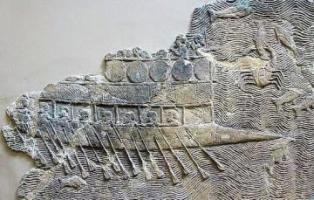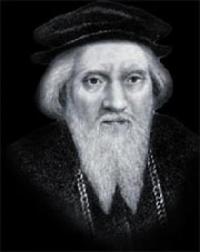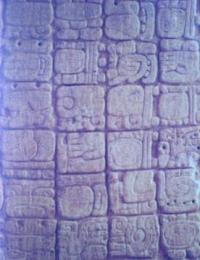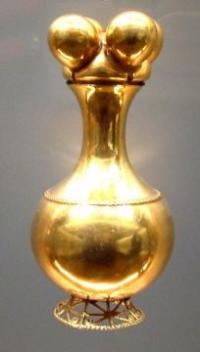Michigan's Mysterious Indian Mounds

As Europeans settled Michigan they crowded out the native Indian populations, destroying ancient burial sites and raiding them for treasures and artifacts. They were particularly fascinated by the burial mounds scattered throughout the state. Even the native Indians claimed not to know who the mound builders were. Some recalled old legends that their ancestors had conquered and ousted an ancient evil civilization which had dug for copper and built mounds.In a 1956 News article, amateur archaeologist Clair Reynolds told of an elderly Indian who refused to guide him to one of the ancient mound sites, warning: "It is not good that you go to the place of the Yam-Ko-Desh." The Indian insisted that ghosts of the Yam-Ko-Desh, the Ottawa name for the mound builders meaning "the prairie people," still roamed the site. As they migrated into what is now Michigan, Ottawa legends told of finding the Prairie people, who were "thicker than the leaves on a tree." It is believed that the Ottawas, Ojibwas, and Potawatamis formed an alliance to exterminate them.
Some archaeologists believe, based on uncovered artifacts, that the mound builders had entered the bronze age, had a high level of intelligence and traded with the Aztecs and Mayans. The prehistoric people left more famous mounds in other states, such as the Great Serpent Mound in Ohio, and other constructions in the south and in western states.
In 1925 a University of Michigan professor, Dr W.B. Hinsdale, surveyed the lower peninsula and listed Michigan mounds by county. Seven counties had more than 20 mounds. There were 57 mounds in Clinton County, Macomb had 25, Wayne 12, Oakland only two. Hinsdale published his work in the 1925 book, "Primitive Man in Michigan," in which he wrote, "There are fully 600 mounds still to be seen in the state and at least 500 more must have been destroyed within the last 150 years. The enclosures, usually known as 'Indian forts,' but probably having no connection with military usage, are also vanishihng rapidly. It is the duty of the state to locate, measure, photograph and chart these structures before they disappear entirely," Hinsdale insisted.
Many mounds along the Detroit and Rouge rivers had been leveled in the previous century to make way for development. One, the "Great Mound on the Rouge" in Delray at the junction of the Rouge and Detroit rivers, captured the fancy of early historians. It was 400 feet long, 200 feet wide and 40 feet high. It was so packed with bones that they were easily exposed by wandering cattle.
Early French explorers note the exisitence of the mound but by 1880, "pot hunting," the bane of archaeologists, had taken its toll. No trace of the mound remains today. This skull found in a Michigan burial mound reportedly suggests that the early inhabitants of the state were performing brain surgery well before the birth of Christ.
Prof. Hinsdale lamented the loss but wrote of a smaller structure still within the grounds of Fort Wayne. "Wherever these have been investigated," he wrote, "they have proven to be burial sites arising, perhaps from an ancient custom of the Canadian Hurons who thus met to honor the bones of their dead every 10 or 15 years. Generally a number of skeletons in various positions have been found and with them, arrow and spear heads, stone tools, pottery vessels and in the upper strata, iron, copper and brass kettles, glass beads and now and then silver crosses, indicating the visit of a Catholic missionary."
In 1926 a local collector of Indian relics, Newell E. Collins, said of the smaller mound at Fort Wayne, "Numerous Indian bodies were exhumed in 1870. Many arrow-heads, of course, were overlooked and I was lucky enough to be on the ground, not so long ago, when such remains still rewarded the patient seeker."
Collins continued, "One early witness tells how the red men used to try to fool the spirits of the departed. After they had deposited the body in the mound at Springwells (Street) the friends of the dead man went into the river and waded about in a zig-zag course for some time until the spirit had departed on its long journey. The object of this custom was that the spirit might not be able to follow their track in the sand. According to the current superstition, the soul of the deceased lingered for several days, unwilling to quit his earthly belongings. As a ghost cannot cross water, the ruse resorted to get the spirit out of touch with his freinds and he hereupon gave up his intention of staying near his familiar scenes and companions and started off for the happy hunting grounds."
As late as 1937, Joe Karmann recalled a tale his mother told him about their farm near the Rouge River being an Indian burial ground. When Ford Motor Co. excavators began digging near Airport Drive and Dearborn Road, Karmann and his 81-year-old father went to the site with shovels. They unearthed two perfect skeletons of men about five foot six with exceptionally broad shoulders and well preserved teeth and black hair about 9 inches long. Karmann turned the skeletons over to the Ford Motor Company.
Prof. Hinsdale also studied pottery and carvings found in the 22 mounds located in Sanilac County, in Michigan's thumb and found a skull that showed evidence of successful brain surgery. During the 1920s archaeologists speculated on how prehistoric Americans arrived on the two continents. Many suggested that they crossed an ice bridge from China or Russia into Alaska during the ice age, gradually making their way south and east.
Prof. Hinsdale lamented that "It is really astounding how little we know of the many peoples and cultures which the coming of the white men have caused to vanish. In Indian mounds, in forts or enclosures, in the old pits and on ancient camping sites we find many a relic for which the archaeologist had no classificaiton, and the use of which he is ignorant. When in doubt we take refuge in the term 'ceremonial.' and express the belief that the arcicle of carving had something to do with the religious ovservance of the tribe."
Huron County conservation officer A. J. Neering demonstrates an ancient mortar and pestle found in an Indian mound in his county. The pestle was probably attached to a young sapling with a thong. Constant pounding wore a six-inch-deep cup-shaped depression in the mortar.
One imaginative group, citing pyramids found in the Americas, suggested that the legendary Atlantis influenced both civilizations and left related civilizations on both sides of the ocean. Dr Henriette Mertz, in her book, "The Mystic Symbol," (1986) speculates that the ancient Phoenician mariners traveled to Upper Michigan to mine the extremely pure and abundant copper lodes to satisfy the demands of the ancient Egyptians and Greeks. The mines of Sinai, she says had been played out by that time, and those of Crete were too meager. Records spoke of an alien red-skinned people linked with the import of copper and that it took three years for the ocean vessles to return with their copper. Mertz cites tablets found in Michigan with hieroglyphic and cuneiform writing, often dismissed as forgeries, as evidence of later contact with the Mediterranean.
"Here," he said about a rock carving in Sanilac County, "is plainly the figure of a man with a drawn bow, but what does it mean? How long the Indians had been in America before the arrival of Columbus and how they got here is one of the great puzzles that confronts us."
Archaeologists have found Michian copper in artifacts around the world. Scientists agree that they date back thousands of years before Christ. The copper mine in Ontanagon prouduced a huge boulder, later called the Ontanagon Boulder, a 6,000 pound copper rock. Detroiter Julius Eldred headed north in 1841 to buy the copper boulder from local Indians. He had to buy it again from a group of tough miners who also claimed it was theirs.
After much time and effort Eldred got it to the water and onto a barge and floated it to Detroit where he planned to charge the citizens 25 cents a peek. Called a "supreme gesture of nature," and a "veritable nugget from the gods," the rock generated nearly as much interest as the Hope Diamond or King Tut's tomb. The Upper Peninsula seemed as far away as the moon to most Detroiters. Interest in the large copper chunk caused the Secretary of War to seize it as a national display fit for the Smithsonian Institution in Washington. The Government gave Eldred $5,665 for his trouble.








